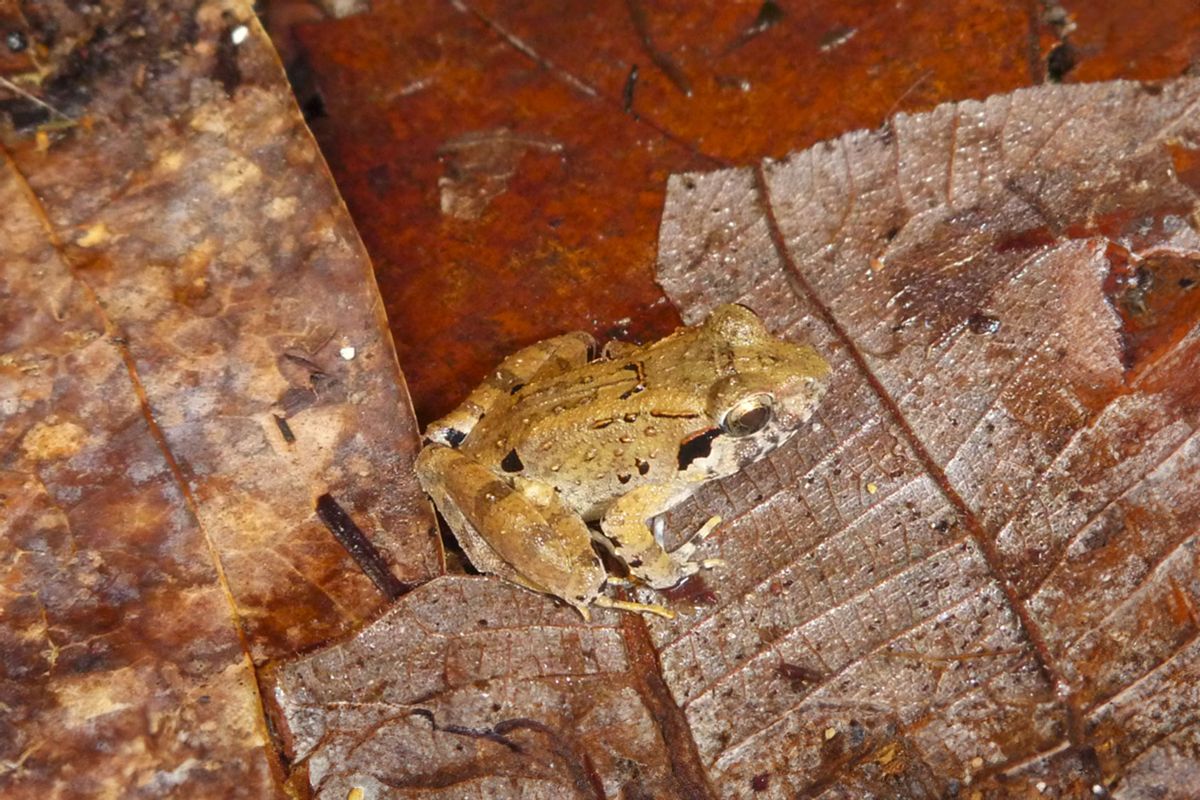The biodiversity of frogs and toads demonstrates just how ingenious evolution can get. Some are like the glass frog, which resembles a particularly famous Muppet. Others are like the Colorado River toad, whose skin secretes a powerful hallucinogenic enzyme called 5-MeO-DMT. Then there is the so-called “horror frog” or hairy frog, which can break its own bones to pierce through its toes and form makeshift claws. But new frogs are being discovered all the time, notably in a new study in PLOS One, which adds another freaky frog to this list: Meet Limnonectes phyllofolia, the world’s smallest “fanged” frog.
Measuring at 1.2 inches (30 millimeters) from snout to vent, L. phyllofolia inhabits an Indonesian region known as Sulawesi Island. Aside from its diminutive stature, the frog’s most notable feature are a pair of “fangs” that jut out from its lower jawbone. (Yes, some frogs have teeth!) Resembling pairs of pinpricks from a human’s vantage points, the features help the tiny amphibians fight each other, attract mates and crack open the shells of prey like crabs and centipedes. Additionally, L. phyllofolia are unusual among frog species in that the males rather than the females guard the clutches of eggs.
“The discovery and description of the new species highlights the remarkable reproductive trait diversity that characterizes the Sulawesi fanged frog assemblage despite that most species in this radiation have yet to be formally described,” the authors write in the study. In an accompanying press statement, the study’s lead author Jeff Frederick, a postdoctoral researcher at the Field Museum in Chicago, explained that there are doubtless many other fascinating frog species yet to be found — and in danger of never being discovered at all.
“Most of the animals that live in places like Sulawesi are quite unique, and habitat destruction is an ever-looming conservation issue for preserving the hyper-diversity of species we find there,” Frederick said. “Learning about animals like these frogs that are found nowhere else on Earth helps make the case for protecting these valuable ecosystems.”

